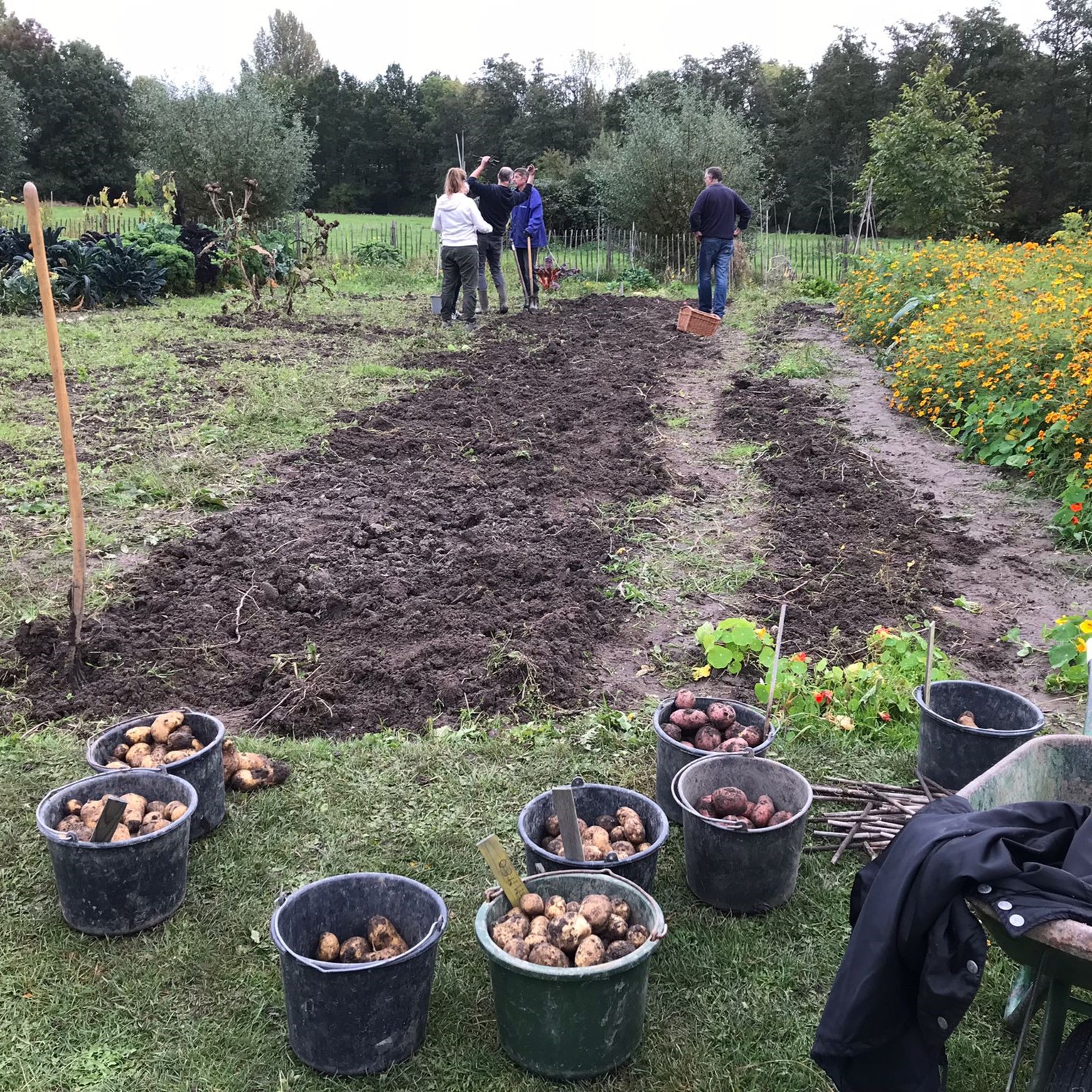Skill, craft, and poiesis-intensive innovation
DOI:
https://doi.org/10.7577/formakademisk.5415Keywords:
Craft, Skill, Food, Poiesis, Ethnography, Anthropology, Responsible InnovationAbstract
What is craft practice? The purpose of this paper is to contrast the categorization of craft practice with that of skill and innovation. I argue for the relevance of innovative skilled practice to future-making. Both skill and craft play an important part in collective engagements with futuring. With an ethnographic methodology, typical of anthropological fieldwork, I have explored skill in dairy farming, cheese making, and currently food gardening. In all these three realms, the results of ethnographic observation are that ideational processes immediately connect to intimate acquaintance with materials and ecosystems (including flora and fauna, soil, climate, landscape and humans). My conclusion is that craft practice and its outcomes imply a highly localized cosmology of evaluation. I show how comparative ethnography allows the mapping of these relations between people and places, and their more-than-local connections.
References
Appadurai, A. (1986). The social life of things. Commodities in Cultural Perspective. Cambridge University Press. https://doi.org/10.1017/CBO9780511819582
Barham, E. (2003). Translating terroir: The global challenge of French AOC labelling. Journal of Rural Studies, 19(1), 127-138. https://doi.org/10.1016/S0743-0167(02)00052-9.
Black, A., Burisch, N. (Eds.). (2021). The New Politics of the Handmade. Craft, Art and Design. Bloomsbury.
Corti, M. (Ed.). (2019). La Transumanza tra Storia e Presente. [Transhumance between history and present]. Edizioni Festival del Pastoralismo.
Crowder, K. (2016). Producing Suffolk Punch Horses: Craftsmanship with Sentient Media. In T. Marchand (Ed.), Craftwork as Problem Solving. Ethnographic Studies of Design and Making (pp. 51-70). Routledge. https://doi.org/10.4324/9781315562803-3
De Musso, F., Gracjasz, A., Grasseni, C., Vasile, M., Walstra, V. (2022). The Food Citizens? i-doc. https://www.universiteitleiden.nl/en/foodcitizens/about/interactive-platform
De Waal, E. (2005). Starting at Zero: Black Mountain College 1933-1957. Arnolfini/ Kettle’s Yard.
Government of the Netherlands. (n.d.). The nitrogen strategy and the transformation of the rural areas. Ministry of Agriculture, Nature and Food Quality. Retrieved August 13, 2023, from https://www.government.nl/topics/nature-and-biodiversity/the-nitrogen-strategy-and-the-transformation-of-the-rural-areas.
Gracjasz, A. (2022). Cyrkularność pomysłów i idei zrównoważonego rozwoju – perspektywa antropologiczna a jedzenie, Formy, 14, 1-29. [Circularity of ideas and sustainable development - an anthropological perspective on food] https://formy.xyz/artykul/cyrkularnosc-pomyslow-i-idei-zrownowazonego-rozwoju-perspektywa-antropologiczna-a-jedzenie/
Grasseni, C. (2017). The Heritage Arena. Reinventing Cheese in the Italian Alps. Berghahn Books. https://doi.org/10.2307/j.ctvss40qp
Grasseni, C. (2022). Collaboration, mediation, and comparison: epistemological tools from theory-driven fieldwork practice”. Anthrovision, 8(1). https://journals.openedition.org/anthrovision/6735#tocto1n5
Grasseni, C. (2023). Crafting Futures through Cheese-Making in Val Taleggio (Northern Italy). Gastronomica 23(1), 51–64. https://doi.org/10.1525/gfc.2023.23.1.51
Hankins, J. (2019). Grassroots case studies in 'poiesis-intensive responsible innovation (PIRI). In R. v. Schomberg, J. Hankins (Eds.), International Handbook of Responsible Innovation (pp. 393-404). Edward Elgar Publisher. https://doi.org/10.4337/9781784718862.00036.
Hankins, J. (2020, August 4). Part 7. Poiesis-intensive Innovation. Technology Bloggers. https://www.technologybloggers.org/series/part-7-poiesis-intensive-innovation/
Harrod, T. (Ed.). (2018). Craft. M.I.T. Press.
Kirksey, S. E., Helmreich, S. (2010). The emergence of multispecies ethnography. Cultural Anthropology, 25(4), 545–576. https://dx.doi.org/10.1111/j.1548-1360.2010.01069.x.
Laudan, R. (2004). Slow Food: The French Terroir Strategy, and Culinary Modernism. Food, Culture & Society, 7(2), 133–44. https://doi.org/10.2752/155280104786577833.
Paxson, H. (2020). The Life of Cheese. Crafting Food and Value in America. University of California Press.
Quant, M. (2011). Mary Quant: My Autobiography. Hachette.
Redazione FGB. (2020, June 16). Responsible Innovation, a Narrative Approach, by Jonathan Hankins [online book review]. https://www.fondazionebassetti.org/en/focus/2020/06/responsible_innovation_a_narra.html
Roberts, J. (2007). Skill and deskilling in art after the ready-made. In T. Harrod (2018). (Ed.), Craft (pp. 49-54). M.I.T. Press.
Trubek, A. (2008). The Taste of Place. A Cultural Journey into Terroir. University of California Press.
Ulin, R. (1996). Vintages and Traditions: An Ethnohistory of Southwest French Wine Cooperatives. Smithsonian Institution Press.
Vasile, M. (2023). Building networks for sustainability? Food surplus redistribution, non-profit organisations and neoliberalism in Turin, Italy, Kritisk etnografi – Swedish Journal of Anthropology, 5(1-2), 59-76. http://urn.kb.se/resolve?urn=urn:nbn:se:uu:diva-490450.
Vasile, M., Grasseni, C. (2022). Visions of the urban green: interrogating urban renewal in Turin’s Periphery”. Anthrovision, 8(1). https://journals.openedition.org/anthrovision/6812
Walstra, V. (2020a, March 2). Herenboeren Rotterdam: Farming for the Future. Food Citizens? Blog. https://www.universiteitleiden.nl/en/foodcitizens/news/herenboeren/
Walstra, V. (2020b, June 25). Impact of COVID-19: Digital food collectives in Rotterdam. Food Citizens? Blog. https://www.universiteitleiden.nl/en/foodcitizens/news/impact-of-covid-19---food-and-citizenship-in-rotterdam/

Downloads
Published
How to Cite
Issue
Section
License
Copyright (c) 2023 Cristina Grasseni

This work is licensed under a Creative Commons Attribution-NoDerivatives 4.0 International License.
Authors who publish with this journal agree to the following terms:
- Authors retain copyright and grant the journal right of first publication with the work simultaneously licensed under a Creative Commons Attribution 4.0 License that allows others to share the work with an acknowledgement of the work's authorship and initial publication in this journal.
- Authors are able to enter into separate, additional contractual arrangements for the non-exclusive distribution of the journal's published version of the work (e.g., post it to an institutional repository or publish it in a book), with an acknowledgement of its initial publication in this journal.
- Authors are permitted and encouraged to post their work online (e.g., in institutional repositories or on their website) prior to and during the submission process, as it can lead to productive exchanges, as well as earlier and greater citation of published work (See The Effect of Open Access).
- The author(s) must manage their economic reproduction rights to any third party.
- The journal makes no financial or other compensation for submissions, unless a separate agreement regarding this matter has been made with the author(s).
- The journal is obliged to archive the manuscript (including metadata) in its originally published digital form for at least a suitable amount of time in which the manuscript can be accessed via a long-term archive for digital material, such as in the Norwegian universities’ institutional archives within the framework of the NORA partnership.
The material will be published OpenAccess with a Creative Commons 4.0 License which allows anyone to read, share and adapt the content, even commercially under the licence terms:
This work needs to be appropriately attributed/credited, a link must be provided to the CC-BY 4.0 licence, and changes made need to be indicated in a reasonable manner, but not in any way that suggests that the licensor endorses you or your use.



